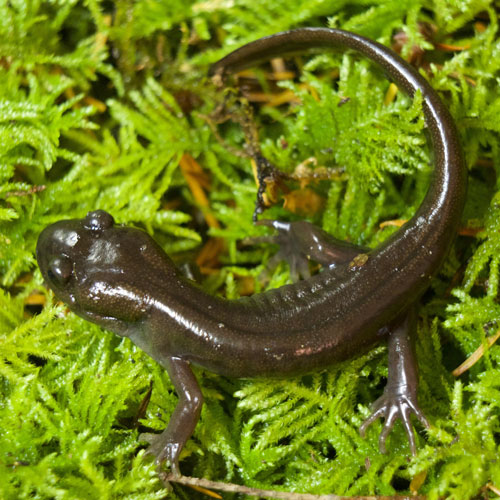Fast Facts
Where they live
- View a map of where they live.
- In Washington State are found from the Columbia River Gorge to just north of Mt. St. Helens.
- Rely heavily on water and are often found at least partially submerged in water at stream edges under rocks or gravel in mountain forest
- Prefer slow moving streams.
- Heavy rains can bring them onto land, but they never stray far from the water’s edge.
Breeding
- Breeding is between October and July, eggs are laid in spring.
- Eggs are unattached to each other and hidden in streams under rocks.
- Larvae have small gills and are assumed to take up to four years to go through metamorphosis.
Cool Biology Facts
- Prefer cold water temperatures and do not adapt to any increase in water temperatures.
- Have reduced lungs and breathe mostly though their skin.
- Torrent salamanders can live up to ten years! It takes about 5-6 years before they reach sexual maturity.
Threats
- Populations are isolated and any changes in their habitat (logging, human habitation) can wipe out these small populations. View their status on the IUCN Red List of Threatened Species.

Amphibians & Reptiles of Washington
Do you know where rattlesnakes live in our state? Or which salamander breathes through its skin? Explore the fascinating diversity of the 26 species of amphibians and 28 reptiles found in Washington state.

